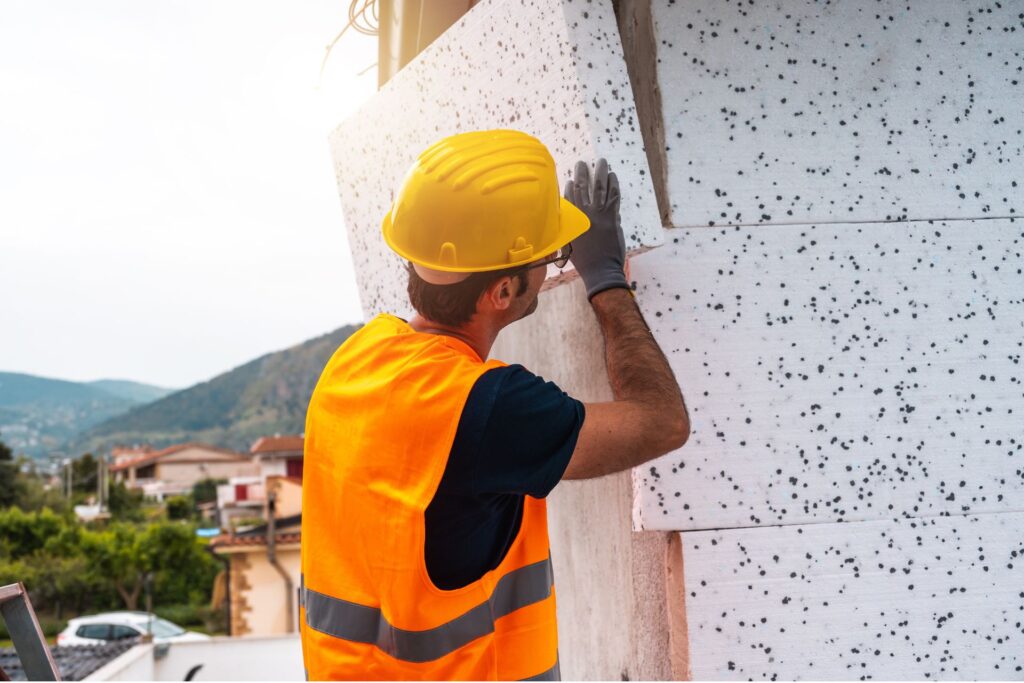Welcome to the ultimate guide to monolithic cladding in New Zealand! In this comprehensive guide, we’ll explore everything you need to know about monolithic cladding, from its history and types to its benefits and installation process. Whether you’re a homeowner considering a renovation, a builder looking for reliable information, or simply curious about modern cladding options, this guide is designed to provide you with all the essential knowledge in an engaging and easy-to-understand format. Join us as we delve into the world of monolithic cladding and discover why it has become a popular choice in NZ’s building industry.
Monolithic cladding is a sleek, modern exterior finish commonly used in New Zealand construction. It involves applying a continuous, seamless layer of material—such as stucco, EIFS, or solid plaster—over a building’s exterior. This method provides excellent weather-tightness, durability, and insulation, making it a popular choice for both residential and commercial properties. Monolithic cladding not only enhances a building’s aesthetic appeal but also requires low maintenance, offering a cost-effective solution over time.
- What Is Monolithic Cladding?
- Benefits Of Monolithic Cladding
- Common Materials Used In Monolithic Cladding
- Installation Process
- Regulatory And Compliance Aspects
- Common Issues And Solutions
- Cost Considerations
- Case Studies And Real-Life Examples
- Expert Tips And Best Practices
- Future Trends In Monolithic Cladding
- FAQs: About Monolithic Cladding NZ
- Conclusion
What Is Monolithic Cladding?
Monolithic cladding is a type of exterior cladding system that provides a seamless, continuous surface to the exterior of a building. Unlike other cladding systems that may use multiple pieces or panels, monolithic cladding is applied as a single, unbroken layer. This creates a sleek, modern appearance that is popular in contemporary architectural designs. The term “monolithic” literally means “single stone,” reflecting the unified look that this cladding provides. Monolithic cladding can be made from various materials, including synthetic products like Exterior Insulation and Finish Systems (EIFS), traditional stucco, or solid plaster.
History and Development:
The use of monolithic cladding in construction has a rich history, evolving significantly over the decades. Originally, traditional methods like stucco and plaster were used for creating seamless exterior finishes. These materials were valued for their durability and ability to provide a continuous surface that could be molded to intricate architectural designs.
In the mid-20th century, the development of synthetic materials led to the creation of systems like EIFS, which combined insulation and finishing layers into a single application. This innovation was driven by the need for better thermal performance and quicker installation times. EIFS became particularly popular in Europe and North America before making its way to New Zealand. Over time, improvements in materials and techniques have enhanced the performance, durability, and aesthetic appeal of monolithic cladding systems.
Types of Monolithic Cladding:
1. EIFS (Exterior Insulation and Finish System)
Description: EIFS is a synthetic cladding system that includes insulation and a finishing layer. It typically involves multiple layers: an insulation board, a base coat with embedded reinforcing mesh, and a finish coat that provides the desired texture and color.
Benefits: This system is highly energy-efficient, providing excellent thermal insulation. It is also lightweight and can be applied to various substrates.
Considerations: Proper installation is crucial to prevent moisture intrusion and potential damage.
2. Stucco
Description: Stucco is a traditional plaster made from cement, sand, and lime. It is applied wet and hard to a very dense solid. Modern stucco often incorporates additional synthetic materials to improve flexibility and durability.
Benefits: Stucco is known for its robustness and ability to withstand harsh weather conditions. It also allows for a wide range of textures and finishes.
Considerations: Stucco requires skilled application and regular maintenance to prevent cracking and water ingress.
3. Solid Plaster
Description: Solid plaster involves applying a mixture of cement, lime, and sand directly onto a building’s exterior surface. This method has been used for centuries and is known for its strength and durability.
Benefits: Solid plaster provides a very hard and durable finish that is resistant to fire and weather. It also offers a variety of finish options, from smooth to highly textured.
Considerations: Similar to stucco, solid plaster needs proper maintenance and can be prone to cracking if not applied correctly.
In New Zealand, these types of monolithic cladding are widely used due to their ability to provide a sleek, modern appearance while also offering practical benefits like improved insulation and weather resistance. When choosing a monolithic cladding system, it’s important to consider factors such as the building’s design, the local climate, and the expertise of the installers to ensure a long-lasting and effective exterior finish.
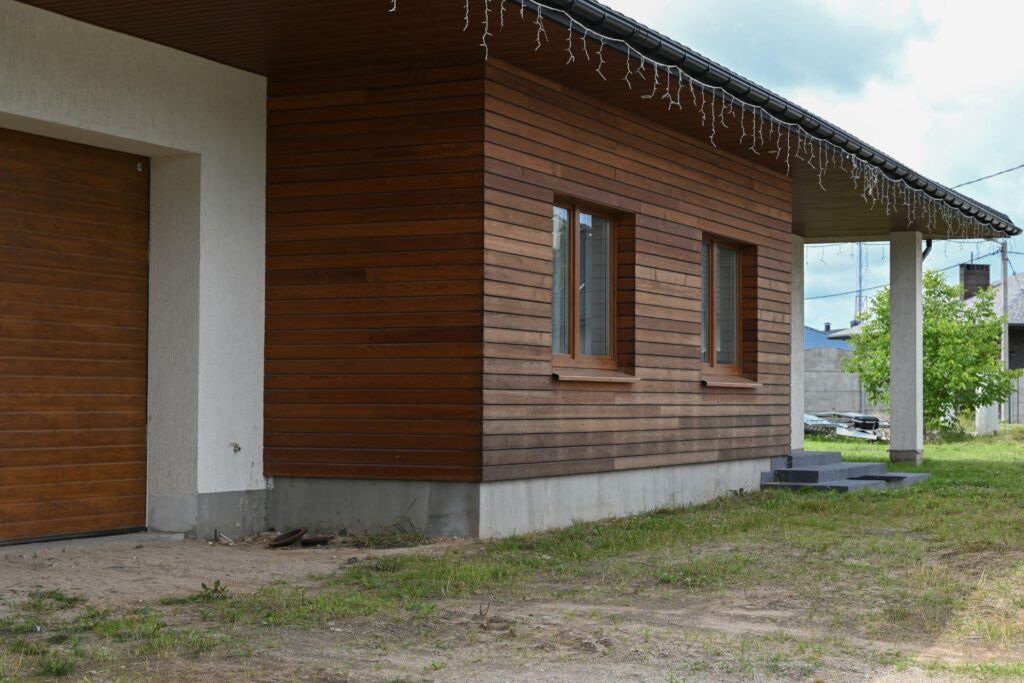
Benefits Of Monolithic Cladding
Monolithic cladding is gaining popularity in New Zealand due to its numerous benefits, making it a preferred choice for homeowners and builders alike. Let’s delve into why this cladding option stands out:
Aesthetic Appeal
One of the most striking advantages of monolithic cladding is its sleek and modern appearance. This cladding style offers a clean, uniform look that can significantly enhance the curb appeal of any building. Its seamless finish creates a contemporary aesthetic that is both timeless and versatile, suitable for various architectural styles. Whether you’re aiming for a minimalist design or a bold, eye-catching facade, monolithic cladding provides the perfect canvas to achieve your vision.
Durability
When it comes to withstanding New Zealand’s diverse weather conditions, monolithic cladding proves to be exceptionally durable. This type of cladding is designed to resist harsh elements, including heavy rain, strong winds, and UV radiation. Its robust nature ensures that the building’s exterior remains intact and visually appealing over time. The materials used in monolithic cladding are often chosen for their long-lasting properties, meaning less worry about wear and tear and more confidence in the longevity of your investment.
Insulation Properties
Energy efficiency is a crucial consideration for modern buildings, and monolithic cladding excels in this area. It offers excellent thermal performance, helping to regulate indoor temperatures throughout the year. By providing a superior insulation layer, monolithic cladding reduces the need for excessive heating or cooling, leading to lower energy bills and a more comfortable living environment. This thermal efficiency not only benefits the homeowners but also contributes to a more sustainable and environmentally friendly building practice.
Low Maintenance
In today’s busy world, low-maintenance building solutions are highly sought after, and monolithic cladding delivers on this front as well. Unlike some traditional cladding options that require frequent upkeep, monolithic cladding is designed for minimal maintenance. Its seamless surface makes it easier to clean and less prone to issues like mold, mildew, and staining. This ease of upkeep means that homeowners can enjoy the beauty and functionality of their cladding without the constant hassle of maintenance tasks, saving both time and money in the long run.
Monolithic cladding offers a compelling mix of aesthetic appeal, durability, energy efficiency, and low maintenance, making it an ideal choice for New Zealand homes. Its sleek design enhances the visual appeal of any building, while its robust properties ensure long-lasting protection against the elements. The superior insulation capabilities contribute to a more energy-efficient home, and the ease of maintenance provides a hassle-free experience for homeowners. By choosing monolithic cladding, you are investing in a high-quality, sustainable, and stylish solution for your building’s exterior.
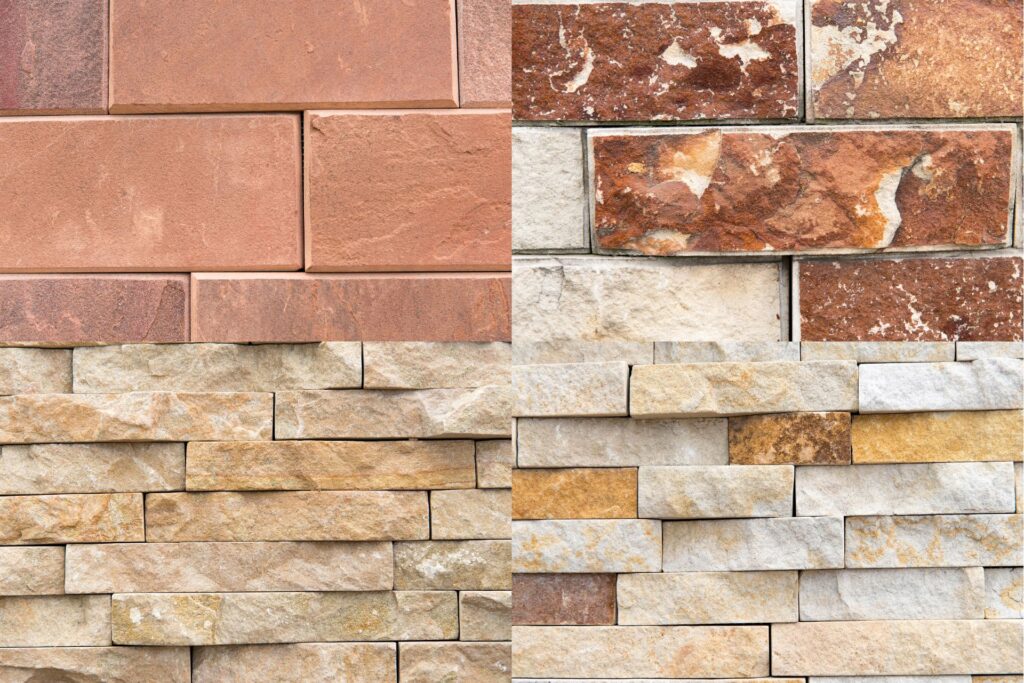
Common Materials Used In Monolithic Cladding
When it comes to monolithic cladding, the choice of materials can significantly impact both the aesthetics and performance of a building. Understanding the common materials used in this type of cladding will help you make an informed decision. Here, we delve into the most popular options: cement-based products and synthetic products, including EIFS, and provide a comparison of their pros and cons.
Cement-based Products
Cement-based products are widely used in monolithic cladding due to their durability and versatility. These materials typically include fiber cement, concrete panels, and stucco. Each of these options has unique features and benefits:
1. Fiber Cement
Durability: Fiber cement is highly resistant to fire, pests, and rot, making it a long-lasting choice.
Aesthetic Flexibility: Available in various textures and finishes, fiber cement can mimic the appearance of wood, stone, or brick.
Low Maintenance: This material requires minimal upkeep, reducing long-term maintenance costs.
Environmental Impact: Many fiber cement products are made from sustainable materials, offering an eco-friendly option.
2. Concrete Panels
Strength: Concrete panels are incredibly strong and can withstand harsh weather conditions, including high winds and heavy rains.
Thermal Mass: These panels provide excellent thermal mass, helping to regulate indoor temperatures and improve energy efficiency.
Sound Insulation: Concrete panels offer superior sound insulation, making them ideal for urban environments or noisy areas.
3. Stucco
Classic Appearance: Stucco provides a smooth, seamless look that is both modern and timeless.
Breathability: This material allows buildings to breathe, reducing the risk of mold and mildew.
Cost-effective: Stucco is relatively affordable and can be applied over various substrates, including wood and masonry.
Synthetic Products
Synthetic materials are another popular choice for monolithic cladding. These products include options like EIFS (Exterior Insulation and Finish Systems) and other polymer-based cladding solutions.
1. EIFS (Exterior Insulation and Finish Systems)
Insulation: EIFS offers superior insulation properties, improving energy efficiency and reducing heating and cooling costs.
Lightweight: This system is lightweight, making it easier and quicker to install compared to heavier materials.
Design Flexibility: EIFS can be molded into various shapes and patterns, allowing for creative and intricate designs.
Moisture Control: Modern EIFS include drainage systems that help manage moisture, reducing the risk of water damage.
2. Other Polymer-based Cladding
Durability: These materials are resistant to fading, cracking, and impact, ensuring long-lasting performance.
Low Maintenance: Synthetic cladding requires minimal maintenance, as it doesn’t need painting or sealing.
Variety of Styles: Available in a wide range of colors and textures, synthetic cladding can suit any architectural style.
Comparison: Pros and Cons of Different Materials
When choosing between cement-based and synthetic products for monolithic cladding, it’s essential to weigh their pros and cons:
1. Cement-based Products
Pros:
- High durability and strength
- Excellent thermal and sound insulation
- Variety of aesthetic options
- Low maintenance requirements
Cons:
- Heavier, requiring stronger structural support
- Longer installation time
- Higher initial cost compared to some synthetic options
2. Synthetic Products
Pros:
- Superior insulation properties (especially EIFS)
- Lightweight and easy to install
- High design flexibility
- Cost-effective, with lower installation costs
Cons:
- Potential issues with moisture if not properly installed
- May not have the same level of fire resistance as some cement-based options
- Can be less durable in extreme weather conditions
Choosing the right material for your monolithic cladding project depends on your specific needs and priorities. Whether you opt for the robust nature of cement-based products or the versatile benefits of synthetic materials, understanding these options will help ensure a successful and lasting cladding solution.

Installation Process
Preparation
Proper preparation is the key to a successful monolithic cladding installation. The first step is to ensure that the site is clean and free of debris. This includes removing any old cladding materials, fixing any structural issues, and making sure the surface is even and smooth. Next, a weather-resistant barrier is applied to the exterior wall to protect against moisture. It’s crucial to inspect the area for any signs of damage or weakness that could affect the cladding’s performance. Additionally, measuring and marking the installation areas accurately will ensure a precise and efficient application process.
Application
The application of monolithic cladding is a meticulous process that requires attention to detail. Start by mixing the cladding material according to the manufacturer’s instructions. Apply the first coat of cladding material using a trowel, ensuring a consistent thickness across the surface. It’s important to work in small sections to prevent the material from drying out before it can be properly smoothed. After the initial coat has dried, a reinforcing mesh may be embedded in the cladding to enhance its strength and durability. Subsequent coats are applied similarly, each layer being allowed to dry before the next is added. This multi-layer approach not only adds strength but also improves the insulation and weather resistance of the building.
Finishing Touches
The finishing touches are what give monolithic cladding its sleek and modern appearance. Once the base layers are fully cured, a final coat of finishing material is applied. This can be a textured or smooth finish, depending on the desired aesthetic. In some cases, additional treatments such as sealants or protective coatings are used to enhance durability and resistance to weather elements. These finishing coats are essential for achieving a uniform look and providing the necessary protection to the cladding system. It’s also the stage where any final adjustments or touch-ups are made to ensure a flawless finish.
Professional vs DIY
When it comes to installing monolithic cladding, deciding whether to hire professionals or go the DIY route is an important consideration. Hiring professionals is often recommended, especially for larger projects or those requiring intricate details. Professionals bring expertise, specialized tools, and experience, ensuring the job is done efficiently and to a high standard. They are also well-versed in local building codes and regulations, which can save time and prevent costly mistakes. On the other hand, DIY installation can be a cost-effective option for those with experience in similar projects and the necessary skills. However, it’s crucial to understand the complexities involved and be prepared for a significant time investment. DIY enthusiasts should also ensure they have access to all required tools and materials and follow safety guidelines meticulously.
In conclusion, the installation process of monolithic cladding involves careful preparation, precise application, meticulous finishing touches, and a thoughtful decision between professional installation and DIY efforts. Each step is vital to achieving a durable, aesthetically pleasing, and weather-resistant exterior that enhances the overall value and appeal of the property.
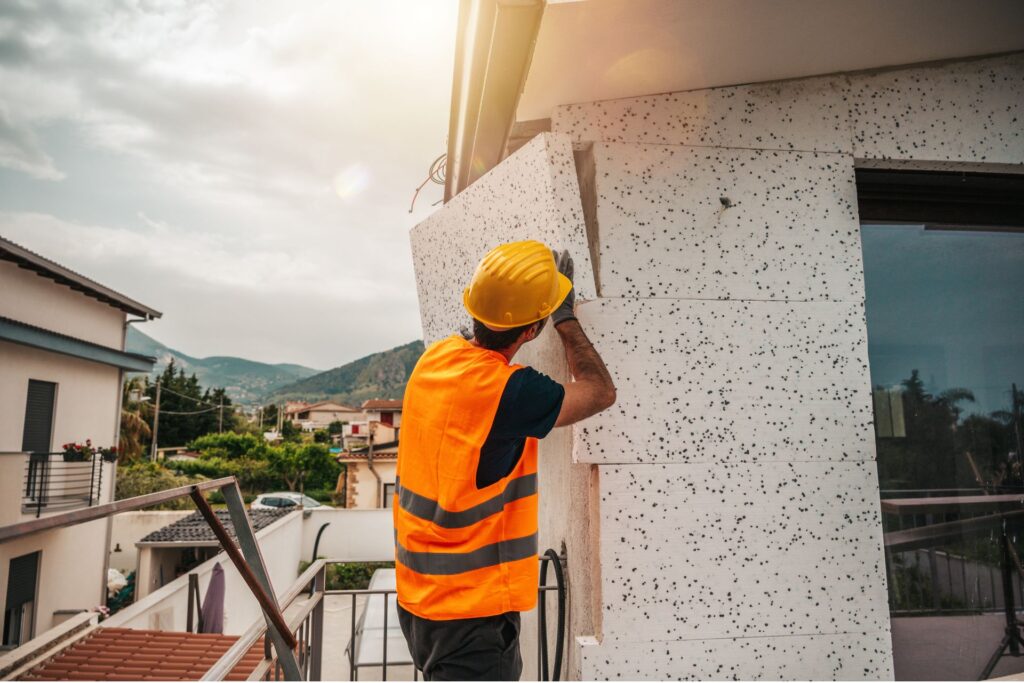
Regulatory And Compliance Aspects
When it comes to monolithic cladding in New Zealand, understanding the regulatory and compliance aspects is crucial. Ensuring that your project aligns with the building codes, passes necessary inspections, and considers environmental impacts can save you time, money, and potential legal issues down the line. Let’s dive into these critical areas:
Building Code Requirements
New Zealand’s building codes set stringent standards for all construction projects, including those involving monolithic cladding. The key points to focus on include:
Durability: According to the NZ Building Code, cladding systems must be durable enough to last at least 15 years without significant maintenance. This is particularly important in the case of monolithic cladding, which is expected to protect the building from weather elements and general wear and tear.
Weathertightness: Ensuring that the cladding system is weathertight is essential to prevent water ingress, which can lead to significant structural damage and health issues like mold. The E2/AS1 Acceptable Solution provides guidelines on how to achieve weather tightness in your cladding system.
Fire Safety: The cladding material should meet the fire safety standards outlined in the Building Code. This includes ensuring that the materials used are non-combustible and provide adequate protection in the event of a fire.
Understanding these requirements helps ensure that your cladding project not only meets regulatory standards but also enhances the longevity and safety of your building.
Inspection and Certification
Compliance with building codes isn’t just about choosing the right materials—it’s also about proper installation and inspection. Here’s why inspection and certification are vital:
Ensuring Quality: Regular inspections during the installation process help identify and rectify issues early, ensuring that the cladding is installed correctly and functions as intended.
Meeting Standards: Post-installation inspections and certifications confirm that the project complies with all relevant building codes. This step is crucial for legal and insurance purposes, providing peace of mind that your building is safe and sound.
Resale Value: Properties with certified cladding systems are more attractive to buyers and can command higher prices. Certification provides assurance to potential buyers that the building has been constructed to high standards.
To ensure compliance, it’s advisable to work with certified inspectors and contractors who are familiar with NZ’s building regulations and best practices.
Environmental Considerations
In today’s construction industry, sustainability is more than just a buzzword—it’s a necessity. When selecting materials and planning your monolithic cladding project, consider the following environmental factors:
Material Sourcing: Opt for materials that are sustainably sourced and have a minimal environmental footprint. For instance, look for cladding products that use recycled content or are made from renewable resources.
Energy Efficiency: Monolithic cladding can contribute to the overall energy efficiency of a building by providing additional insulation. This can reduce heating and cooling costs, benefiting both the environment and your wallet.
Waste Reduction: During installation, aim to minimize waste by using materials efficiently and recycling offcuts. Proper planning and precise measurements can significantly reduce the amount of waste generated.
Lifecycle Impact: Consider the entire lifecycle of the cladding material, from production to disposal. Materials that are durable and require less maintenance over their lifetime are more sustainable options.
By prioritizing these environmental considerations, you can ensure that your cladding project not only complies with regulations but also contributes to a more sustainable future.
In conclusion, understanding and adhering to the regulatory and compliance aspects of monolithic cladding in New Zealand is essential for a successful project. By focusing on building code requirements, ensuring proper inspection and certification, and considering the environmental impact, you can create a cladding system that is safe, durable, and sustainable.
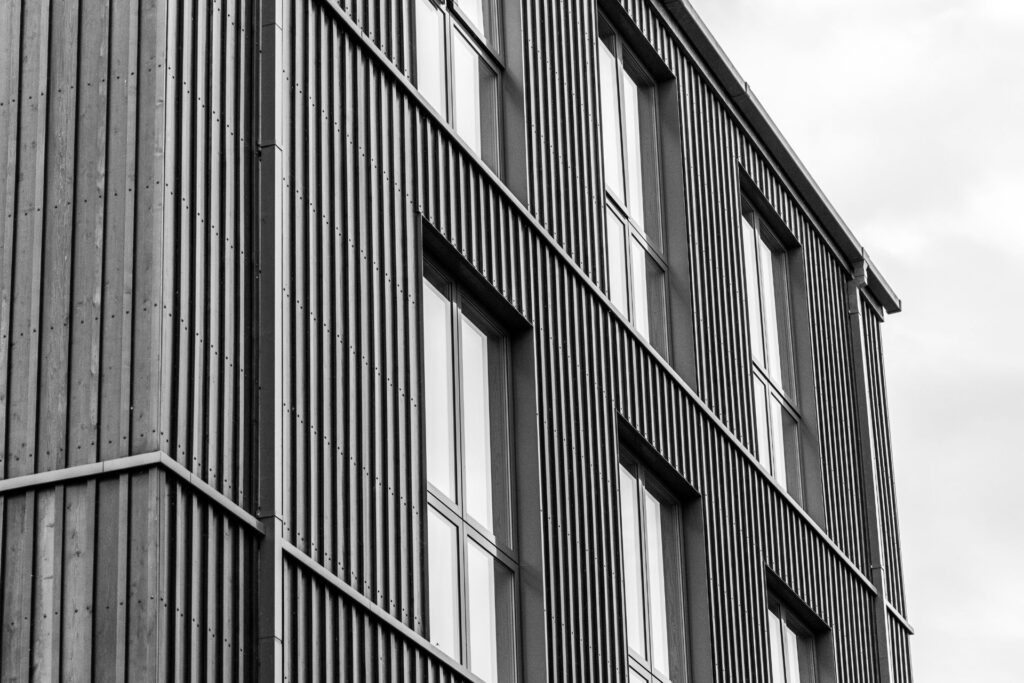
Common Issues And Solutions
When it comes to monolithic cladding, understanding common issues and their solutions is crucial to maintaining a durable and aesthetically pleasing exterior. Here, we’ll explore three prevalent problems—weather tightness, cracking, and mold—and provide practical solutions to address each one.
Weather-tightness
Concerns: One of the most significant issues with monolithic cladding is water ingress, which can lead to leaky buildings. This problem is particularly concerning in regions with high rainfall or where the cladding system is not correctly installed.
Solutions: To ensure your monolithic cladding remains weather-tight, it is essential to focus on proper installation and regular maintenance. Here are some key steps:
Quality Installation: Hire experienced professionals who understand the intricacies of monolithic cladding systems. Proper sealing of joints and edges is critical to prevent water from seeping in.
Regular Inspections: Conduct routine checks, especially after severe weather, to identify any potential weaknesses or damage in the cladding. Early detection can prevent minor issues from becoming major problems.
Sealant Maintenance: Over time, sealants can degrade, reducing their effectiveness. Reapplying sealants periodically will help maintain the cladding’s integrity.
Cracking and Maintenance
Concerns: Cracking is another common issue that can affect the appearance and functionality of monolithic cladding. Cracks can result from various factors, including thermal expansion, structural movement, or impacts.
Solutions: Preventing and repairing cracks is essential to maintaining the cladding’s longevity and aesthetics. Here are some tips:
Flexible Materials: Use flexible sealants and joint compounds that can accommodate slight movements without cracking.
Control Joints: Incorporate control joints into the cladding design to manage thermal expansion and contraction, reducing the risk of cracking.
Prompt Repairs: If you notice any cracks, address them immediately. Small cracks can be filled with suitable fillers, while more extensive damage might require professional repair to ensure the cladding’s integrity is restored.
Mold and Mildew Prevention
Concerns: Mold and mildew can develop on monolithic cladding, especially in damp or humid conditions. This not only affects the appearance but can also pose health risks.
Solutions: Keeping your cladding system free from mold and mildew involves a combination of proper maintenance and environmental control. Here are some strategies:
Adequate Ventilation: Ensure proper ventilation around the cladding to reduce moisture build-up. This can be achieved through well-placed vents and air gaps in the design.
Regular Cleaning: Clean the cladding regularly with mild detergent and water to remove dirt and organic matter that can promote mold growth.
Anti-fungal Treatments: Apply anti-fungal coatings or treatments to the cladding surface to prevent mold and mildew from taking hold. These treatments are particularly useful in areas prone to high humidity.
By addressing these common issues proactively, you can extend the life of your monolithic cladding and maintain its appearance and performance. Regular maintenance, prompt repairs, and using high-quality materials and professional installation are key to a durable and weather-resistant cladding system.
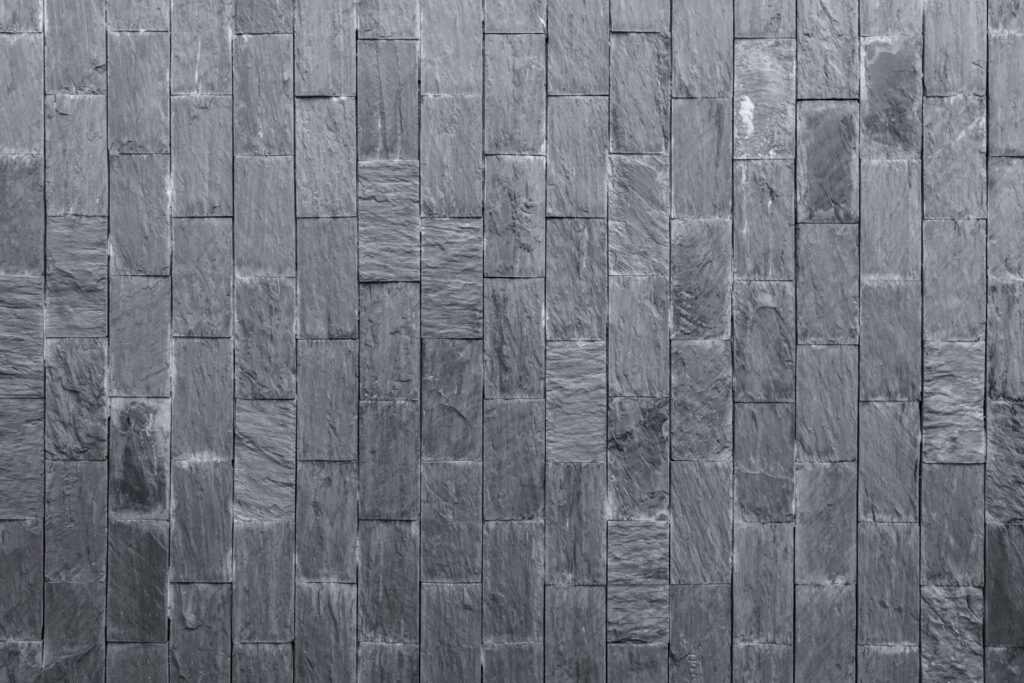
Cost Considerations
When considering monolithic cladding for your home, it’s essential to evaluate the costs involved. This includes not only the initial outlay but also the long-term value and how it stacks up against other cladding options.
Initial Costs
The first thing to consider is the initial cost of monolithic cladding. This includes the price of materials and the installation process. Monolithic cladding typically consists of large, seamless panels that can be made from a variety of materials, such as concrete, stucco, or synthetic products.
Material Costs: The price of these materials can vary significantly. Concrete and stucco are often more affordable, while high-end synthetic materials can be more expensive. For example, concrete panels might cost around $50 to $70 per square meter, while synthetic options can range from $100 to $150 per square meter.
Installation Costs: Installation is another significant factor. Monolithic cladding requires skilled labor to ensure a seamless, durable finish. Installation costs can range from $40 to $100 per square meter, depending on the complexity of the project and the local labor rates.
Overall, the combined material and installation costs for monolithic cladding can range from $90 to $250 per square meter.
Long-term Value
When evaluating the cost-effectiveness of monolithic cladding, it’s important to look beyond the initial expenses and consider the long-term value. This involves maintenance costs, durability, and how well the cladding performs over time.
Maintenance: Monolithic cladding is known for its low maintenance requirements. Unlike traditional cladding options, it doesn’t have joints or seams that can accumulate dirt or moisture, reducing the need for regular cleaning or repairs. This can save homeowners significant money over the years. For instance, maintenance costs for monolithic cladding can be as low as $1 to $2 per square meter annually, compared to $5 to $10 for other types of cladding.
Durability: The durability of monolithic cladding is another factor contributing to its long-term value. High-quality materials can withstand harsh weather conditions, including heavy rain, wind, and UV exposure, without significant wear and tear. This longevity means that homeowners may not need to replace the cladding as frequently as they would with other materials, providing additional savings over time.
Comparative Analysis
To truly understand the cost implications of monolithic cladding, it’s helpful to compare it with other common cladding options, such as weatherboard and brick.
Weatherboard: Weatherboard cladding, typically made from timber or vinyl, can be less expensive initially. Material costs range from $30 to $50 per square meter, with installation costs around $20 to $50 per square meter. However, weatherboard often requires regular maintenance, such as painting or sealing, which can add to long-term costs.
Brick: Brick cladding is known for its durability and low maintenance, similar to monolithic cladding. The material cost for brick can range from $70 to $100 per square meter, with installation costs around $50 to $80 per square meter. While brick may have a higher initial cost, its longevity, and minimal maintenance can make it a cost-effective option over time.
Cost Comparison: When comparing monolithic cladding to weatherboard and brick, it’s clear that while the initial costs of monolithic cladding may be higher, the long-term savings on maintenance and durability can make it a competitive option. For instance, over a 20-year period, the total cost of monolithic cladding (including maintenance) could be significantly lower than that of weatherboard, and comparable to or slightly higher than brick, depending on the specific materials and installation methods used.
In conclusion, while the initial costs of monolithic cladding can be substantial, its long-term value, low maintenance requirements, and durability make it a worthwhile investment. Comparing it with other cladding options like weatherboard and brick shows that monolithic cladding can offer competitive pricing, especially when considering the full lifecycle costs.

Case Studies And Real-Life Examples
Success Stories
Monolithic cladding has been a game-changer for many architectural projects in New Zealand, offering sleek aesthetics and practical benefits. One notable success story is the iconic Te Papa Museum in Wellington. This project showcases the seamless integration of monolithic cladding with modern architectural design. The museum’s exterior not only exudes contemporary elegance but also provides exceptional weather resistance, crucial for Wellington’s notorious winds. The use of monolithic cladding in this project highlights its durability and ability to maintain its appearance over time, proving its worth in high-profile applications.
Another impressive example is the Viaduct Events Centre in Auckland. This waterfront venue leverages the clean lines and robust structure of monolithic cladding to create a visually stunning and functional space. The cladding has performed admirably in the marine environment, resisting salt spray and maintaining its integrity, making it a testament to the material’s resilience and low maintenance requirements.
Lessons Learned
While there are many success stories, the journey with monolithic cladding hasn’t been without its challenges. A residential project in Christchurch faced significant hurdles due to unexpected moisture ingress. The cladding system initially installed did not account for the region’s specific weather patterns, leading to potential water damage. However, this challenge was swiftly addressed by incorporating advanced waterproofing techniques and ensuring proper installation protocols. This project underscored the importance of understanding local climatic conditions and the necessity of adhering to best practices in installation.
Similarly, a commercial building in Hamilton experienced issues with thermal expansion and contraction, which caused minor cracking. The lesson learned here was the critical need for accommodating thermal movement within the cladding design. By implementing flexible joints and selecting appropriate materials, the project team managed to mitigate further issues, demonstrating the importance of adaptability and continuous learning in construction practices.
Visual Gallery
A picture is worth a thousand words, and a visual gallery can vividly demonstrate the versatility and aesthetic appeal of monolithic cladding. Imagine a series of high-resolution images showcasing different applications and styles of monolithic cladding across New Zealand. From the sleek, modern look of urban office buildings to the more rustic, natural appearance of residential homes, the visual gallery would provide inspiration and practical insights.
For instance, a series of images could highlight the variety of textures and finishes available, such as smooth, polished surfaces or more textured, natural stone-like appearances. Descriptions accompanying these images would detail the specific cladding materials used, the installation process, and the overall impact on the building’s design.
In addition to static images, the gallery could include time-lapse videos of cladding installations, providing a dynamic look at the transformation process. These videos would not only be engaging but also educational, offering viewers a deeper understanding of the construction techniques and the attention to detail required for a successful project.
By combining real-life examples with detailed visual documentation, this section would offer a comprehensive view of the potential and practicalities of monolithic cladding. It’s a powerful way to connect with readers, providing them with both the inspiration and the information needed to consider monolithic cladding for their own projects.
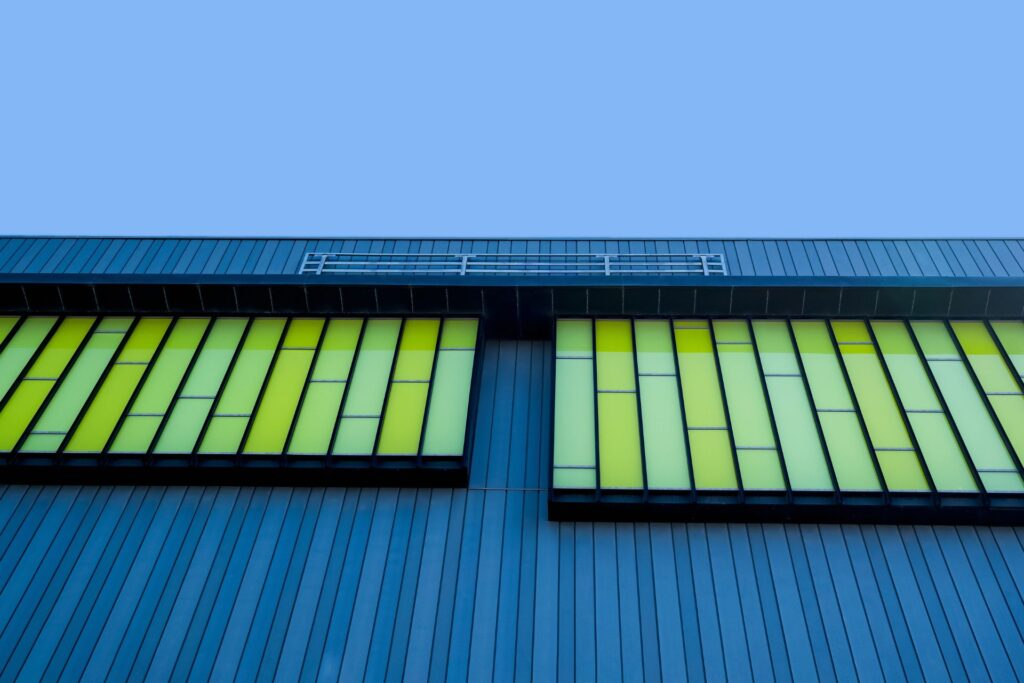
Expert Tips And Best Practices
Choosing the Right Material
Selecting the right material for monolithic cladding is a critical decision that can impact the longevity, appearance, and performance of your building. Here are some factors to consider:
1. Climate Suitability: The local climate plays a significant role in material selection. For instance, if you live in an area with high humidity or frequent rain, opt for materials that are water-resistant and can withstand moisture without deteriorating.
2. Durability: Look for materials that offer long-term durability. Some materials, like certain types of fiber cement, are known for their resistance to weathering, impact, and fire. Durable materials might have a higher upfront cost but save money on repairs and replacements in the long run.
3. Aesthetic Appeal: The cladding material should complement the architectural style of your home. Consider the color, texture, and finish. Some homeowners prefer the sleek, modern look of acrylic cladding, while others might opt for the traditional appearance of stucco.
4. Insulation Properties: Good insulation can improve energy efficiency and indoor comfort. Materials with high thermal resistance can help maintain consistent indoor temperatures and reduce energy bills.
5. Cost: Budget is always a key consideration. While it’s tempting to go for cheaper options, it’s essential to weigh the initial cost against the potential costs of maintenance and replacement. Sometimes, investing a bit more upfront can lead to substantial savings over time.
6. Sustainability: If environmental impact is a concern, look for eco-friendly options. Some materials are made from recycled content and have lower carbon footprints, contributing to more sustainable building practices.
Hiring the Right Contractor
Hiring the right contractor is crucial for ensuring your monolithic cladding is installed correctly and efficiently. Here are some tips to help you find skilled professionals:
1. Experience and Expertise: Look for contractors who specialize in monolithic cladding and have extensive experience. An experienced contractor will be familiar with the specific challenges and techniques associated with this type of cladding.
2. Credentials and Licensing: Ensure the contractor is licensed and insured. This protects you from liability in case of accidents and ensures the contractor meets industry standards.
3. References and Reviews: Ask for references from past clients and check online reviews. Speaking to previous clients can give you insights into the contractor’s reliability, quality of work, and professionalism.
4. Portfolio of Work: Review the contractor’s portfolio to see examples of their previous projects. This can help you assess the quality of their work and see if their style matches your vision.
5. Detailed Quotes: Obtain detailed quotes from multiple contractors. A comprehensive quote should include the cost of materials, labor, and any additional expenses. Be wary of quotes that are significantly lower than others, as they may indicate subpar materials or workmanship.
6. Communication: Choose a contractor who communicates clearly and promptly. Good communication is essential for ensuring your project runs smoothly and any issues are addressed quickly.
Maintenance Tips
Proper maintenance is key to keeping your monolithic cladding looking great and performing optimally. Here are some tips to help you maintain your cladding:
1. Regular Cleaning: Clean your cladding regularly to remove dirt, grime, and pollutants. Use a soft brush and a mild detergent solution to avoid damaging the surface. For more stubborn stains, a pressure washer can be used, but ensure it’s on a low setting to prevent damage.
2. Inspect for Damage: Periodically inspect your cladding for signs of damage, such as cracks, chips, or peeling. Addressing small issues promptly can prevent them from becoming more significant problems.
3. Sealant Maintenance: Ensure that any sealants or coatings are in good condition. These provide a protective layer against moisture and environmental elements. Reapply sealants as needed, following the manufacturer’s recommendations.
4. Prevent Moisture Build-Up: Ensure that the cladding and any associated components, like gutters and downspouts, are functioning correctly to prevent moisture build-up. Water infiltration can cause significant damage over time, so proper drainage is essential.
5. Avoid Harsh Chemicals: When cleaning or treating your cladding, avoid using harsh chemicals that can damage the material. Always use products recommended by the manufacturer.
6. Professional Inspections: Consider having a professional inspection every few years. An expert can identify potential issues that might not be visible to the untrained eye and recommend appropriate maintenance measures.
By following these expert tips and best practices, you can ensure that your monolithic cladding remains a durable, aesthetically pleasing, and functional part of your building for many years.

Future Trends In Monolithic Cladding
Monolithic cladding has become a popular choice in modern architecture, offering sleek and seamless finishes that appeal to contemporary design sensibilities. As we look to the future, several exciting trends are set to shape the evolution of monolithic cladding. These trends encompass innovations in materials, design trends, and sustainability advances, each contributing to a more refined, efficient, and eco-friendly approach to building exteriors.
Innovations in Materials
The realm of monolithic cladding is on the cusp of a materials revolution. Traditional materials such as concrete and stucco are being enhanced with cutting-edge technologies that improve performance and durability. One of the most significant advancements is the development of high-performance composites. These composites blend natural and synthetic elements to create cladding that is not only stronger and lighter but also more resistant to environmental factors like moisture, UV radiation, and temperature fluctuations.
Additionally, nanotechnology is playing a crucial role in material innovation. Nano-coatings are being applied to cladding surfaces to make them self-cleaning and more resistant to dirt and grime. These coatings also provide enhanced thermal insulation, contributing to the energy efficiency of buildings. Furthermore, advancements in 3D printing technology are enabling the production of custom cladding panels that perfectly match architectural specifications, allowing for more personalized and intricate designs.
Design Trends
Design trends in monolithic cladding are evolving to meet the demands of both aesthetic appeal and functional performance. One prominent trend is the move towards minimalist and seamless designs. Architects are increasingly favoring smooth, uninterrupted surfaces that create a sleek and modern look. This trend is not just about aesthetics; it also simplifies the construction process and reduces the potential for water infiltration and other issues associated with seams and joints.
Another emerging design trend is the integration of smart technology into cladding systems. Smart cladding can include sensors that monitor the structural health of a building, detect moisture levels, and even adjust the color of the cladding in response to environmental changes. This integration of technology not only enhances the functionality of the cladding but also opens up new possibilities for dynamic and interactive building facades.
Moreover, the use of bold colors and textures is gaining popularity. Architects are experimenting with a variety of finishes and hues to create visually striking exteriors that stand out in urban landscapes. Textured cladding panels that mimic natural materials like stone and wood are also becoming more common, providing the aesthetic benefits of these materials without the associated maintenance challenges.
Sustainability Advances
Sustainability is a critical consideration in the future of monolithic cladding. As the construction industry strives to reduce its environmental footprint, eco-friendly developments are at the forefront of cladding innovations. One major advance is the use of recycled and sustainable materials in cladding production. Manufacturers are increasingly sourcing raw materials from renewable resources and incorporating recycled content into their products. This not only reduces waste but also conserves natural resources.
In addition, green building certifications and standards are influencing the design and material choices for monolithic cladding. Architects and builders are aiming for certifications like LEED (Leadership in Energy and Environmental Design) and BREEAM (Building Research Establishment Environmental Assessment Method), which encourage the use of sustainable practices and materials. As a result, the market is seeing an increase in cladding options that meet these rigorous standards.
Furthermore, the emphasis on energy efficiency is driving the development of cladding systems that contribute to better thermal performance. Insulated cladding panels are becoming more prevalent, helping buildings maintain consistent interior temperatures and reduce reliance on heating and cooling systems. This not only lowers energy consumption but also results in cost savings for building owners.
In conclusion, the future of monolithic cladding is bright, with innovations in materials, design trends, and sustainability practices paving the way for more advanced and eco-friendly building exteriors. As these trends continue to evolve, we can expect monolithic cladding to remain a key element in modern architecture, offering both aesthetic appeal and functional benefits that meet the needs of contemporary construction.
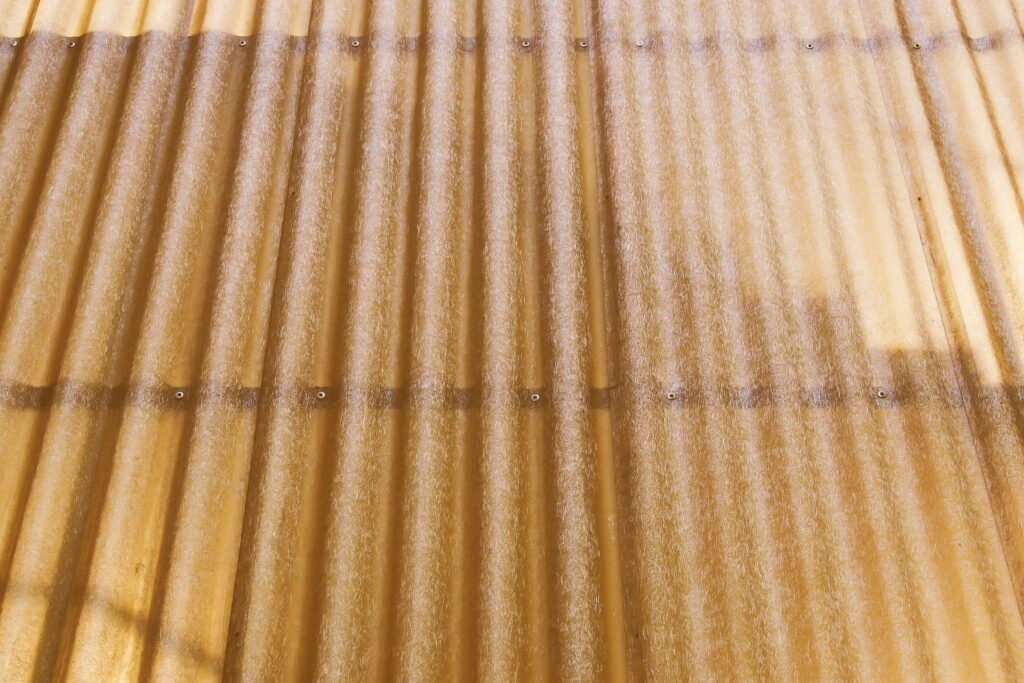
FAQs: About Monolithic Cladding NZ
Conclusion
In conclusion, this comprehensive guide has delved into the essentials of monolithic cladding in New Zealand, exploring its unique benefits, installation processes, and maintenance tips. Monolithic cladding offers a sleek, modern aesthetic and provides excellent weather resistance and durability, making it a smart choice for various construction projects. As you consider your next building project, keep in mind the advantages of monolithic cladding for enhancing both the functionality and visual appeal of your structure. We encourage you to reach out to experienced professionals for personalized advice and to request quotes tailored to your specific needs. For further insights and detailed information, explore additional resources to ensure you make well-informed decisions about your building materials.
About the Author:
Mike Veail is a recognized digital marketing expert with over 6 years of experience in helping tradespeople and small businesses thrive online. A former quantity surveyor, Mike combines deep industry knowledge with hands-on expertise in SEO and Google Ads. His marketing strategies are tailored to the specific needs of the trades sector, helping businesses increase visibility and generate more leads through proven, ethical methods.
Mike has successfully partnered with numerous companies, establishing a track record of delivering measurable results. His work has been featured across various platforms that showcase his expertise in lead generation and online marketing for the trades sector.
Learn more about Mike's experience and services at https://theleadguy.online or follow him on social media:

